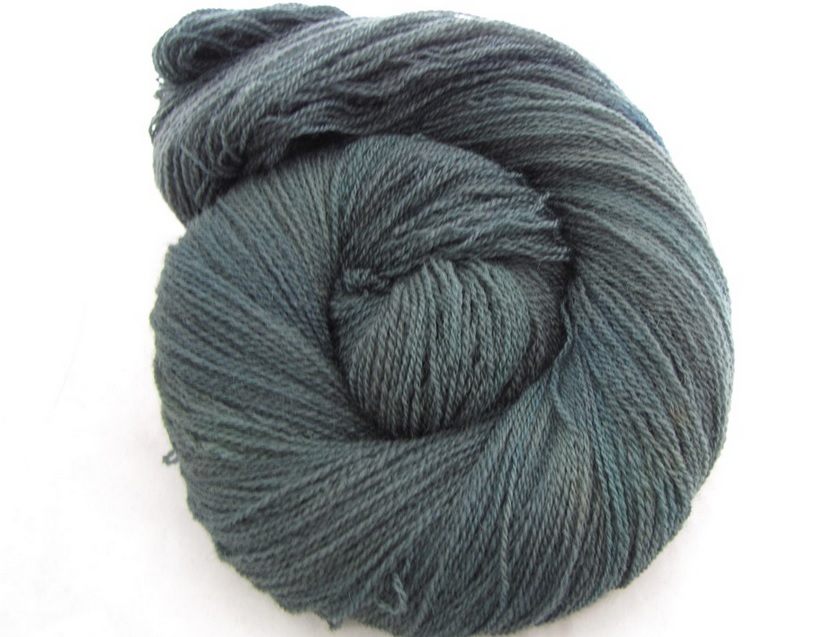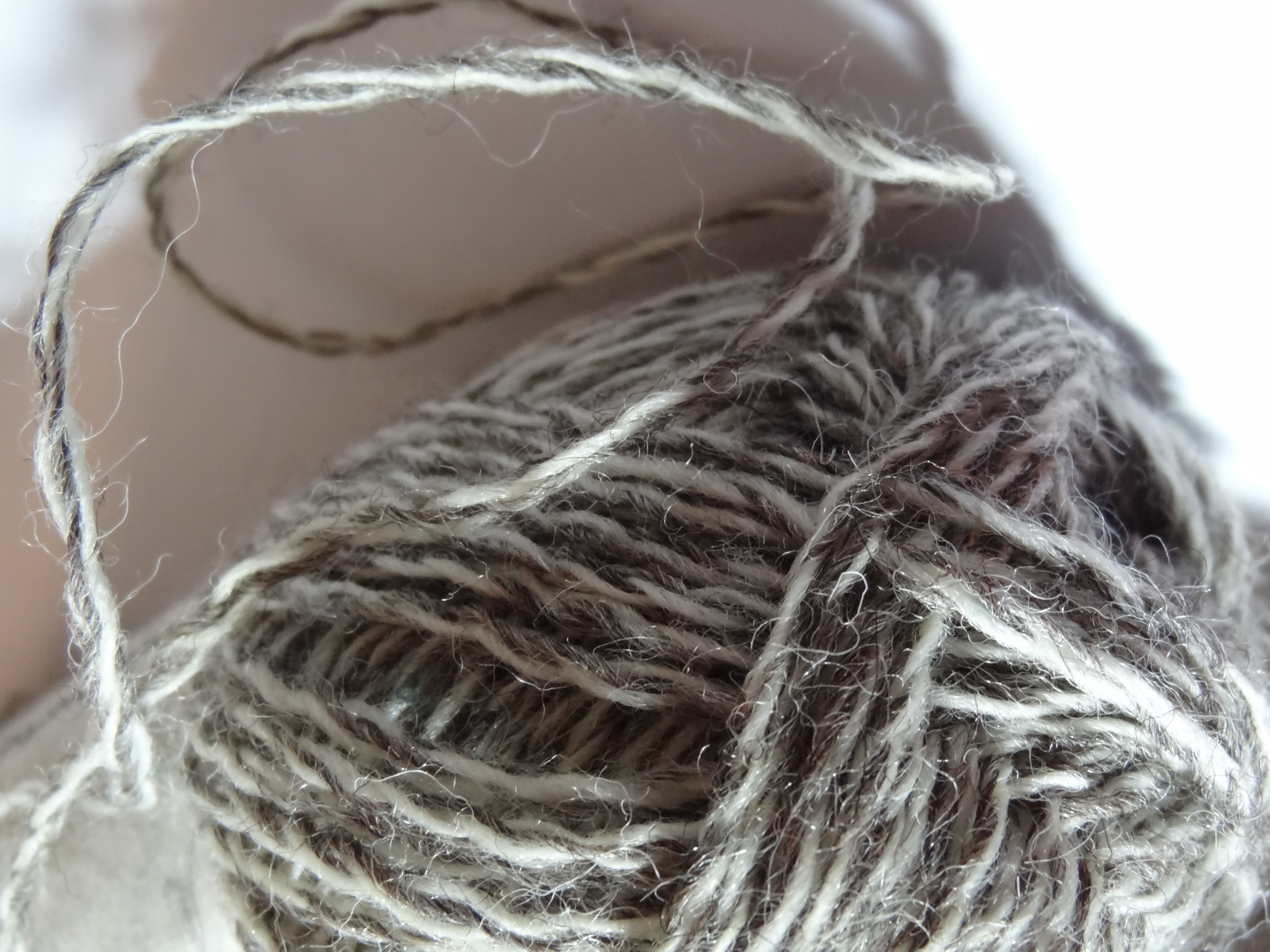At Wovember we take great pleasure in enabling you to wear 100% wool. Always keen to promote the myriad of breed yarns available in the UK, Louise has selected some of the UK’s more characterful wool yarns to bring out the most in a design.
I get a lot of email enquiries from people who want to try a British breed wool and aren’t sure which kind of garments and patterns it is best suited to. While not an expert at such things I am always happy to suggest a yarn and a design that I think will be a complement to one another.
In this post I would like to feature one shawl that can be knit in different yarn weights. Karie Westermann has recently published the last pattern in her Doggerland collection – a collection of accessories inspired by geographical and personal landscapes, archaeological finds and liminal places – and like most patterns in the book there are several suggestions for yarn weights. Storegga, a crescent shaped shawl that calls for drape, can be knit from lace weight to light worsted.

Karie has used yarns from North Sea regions in this book and largely organic – it is enormously pleasing to have the emphasis on yarns which celebrate the texture and characteristics of the fleece. All wool does not begin and end with floppily soft merinos. Depending on the breed, wool can give various textures, definitions, drape and finishes and these need to be celebrated for their different characteristics. In keeping with that spirit I want to highlight some yarns that might complement that Storegga pattern.
I am quite aware of a large contingent of people who will say that they cannot wear “rustic” wool next to their skin. Although I am unsure when “rustic” came to mean something undesirable, I do urge those people to try more breed yarn: wool which feels crisp to the handle on the initial hand-squish-grab, can be the softest yarn to work with and soft on the skin. But for the faint of heart I will try and soften the blow for you with the first one.
For those who like their beautiful hand-dyed yarns, Old Maiden Aunt has 2ply Shetland, which is spun exclusively for dyer Lilith and is hand-painted in an amazing and wide palette of colours. This 2ply is a heavy laceweight and it will create a light fabric with that beautiful Shetland halo. Shetland wool gets softer and softer the more you wash and care for it – it would create a garment that only gets better in age!

This Pure Teeswater from Blacker is a 4ply, but is a lean, smooth yarn that lends itself well to lace. The longwool lustre coupled with that very soft yet-ever-so-slight rustic handle will knit into a drapey fabric. Most longwools would compliment this design. I personally find Wensleydale, Leicester and Lincoln longwool yarns et al, soft on the skin with a tactile floccose surface that makes a wonderful knitted texture.
Gotland has a great soft fleece of dense curls. The stockinette and lace in Storegga will benefit from the silky drape that this yarn will offer. At Yarndale this year I was very struck by Little Grey Sheep’s dyed Gotland yarn, which is available in the three weights that you can knit the pattern in.A silvery natural colour would pack as much of a punch in the shawl – the fibre almost shines.

If there is fear in using a breed yarn than you are unsure of due to its initial feel, why not try using a blended yarn? I am a big fan of Sheepfold – a great place to find breed wool yarn – and discovered their Suffolk Jacob Marl DK that blends the more rustic Jacob with creamy soft down yarn. It is a loose spun yarn and it creates a very pleasing fabric that is airy and warm. The combination the two natural colours is also a nice mix.

I am sure that Storegga would look beautiful in any wool, but when a designer creates a garment in a certain yarn or suggested yarns it can be tricky to move away from the go-to merinos and buttery soft wool that some of us covet. Aside from the fact that the buttery yarns may be wholly inappropriate for the item you are making, the unique delights of breed yarns often don’t get the look in they deserve and could be the perfect yarn for your intended pattern. It is also really important to note that at least three of the wools I mention here are from sheep which are on the Rare Breeds Survival Trust watch list as vulnerable or at risk breeds – buying and knitting with this yarn can mean helping to support and maintain those breeds. The journey from sheep to shawl means even more then.
Choosing the right wool for a design can be wool journey in itself. Coming up in WOVEMBER we will have guest posts about wool from this perspective to give further insight into this process.
